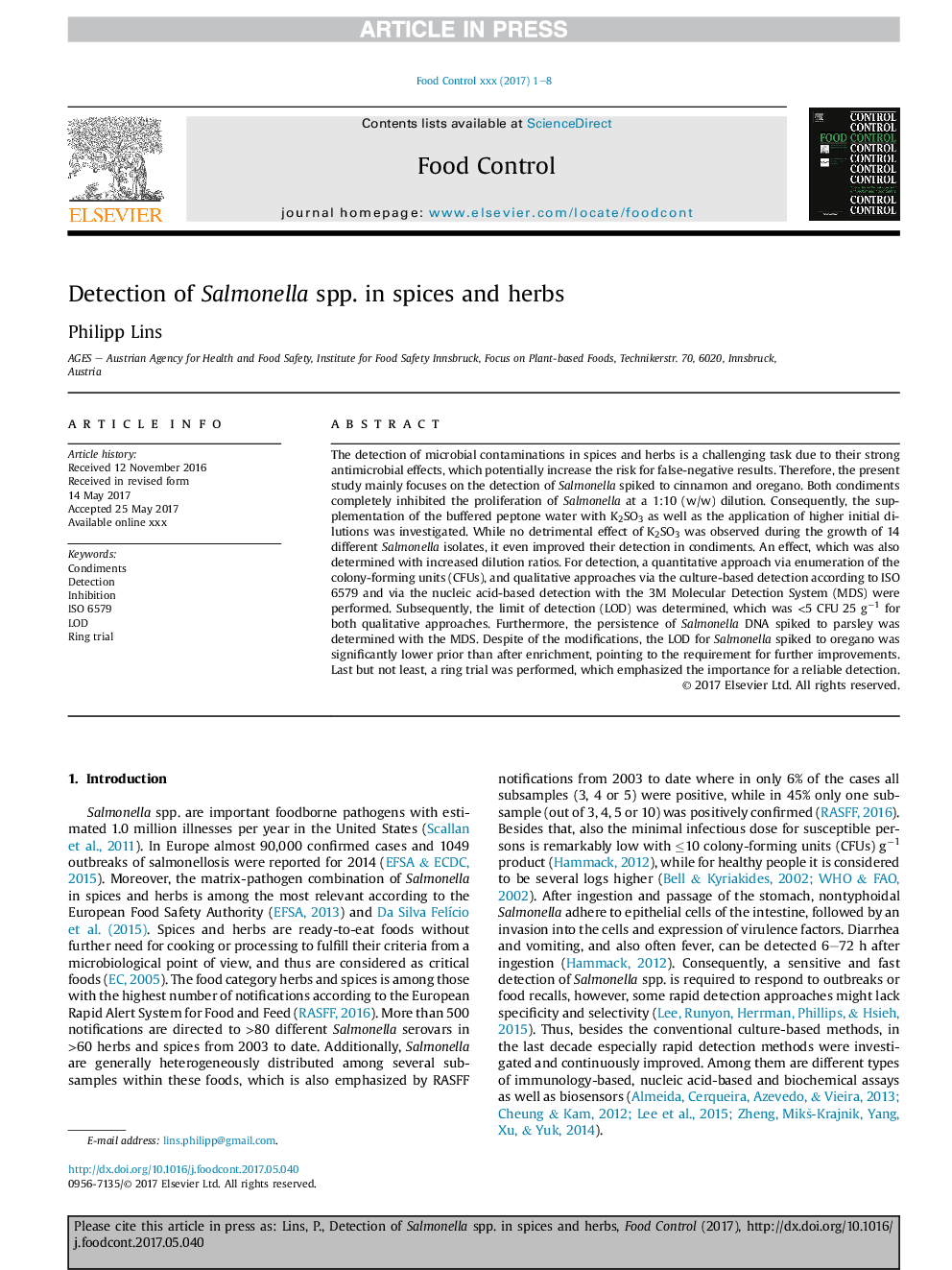| Article ID | Journal | Published Year | Pages | File Type |
|---|---|---|---|---|
| 8888293 | Food Control | 2018 | 8 Pages |
Abstract
The detection of microbial contaminations in spices and herbs is a challenging task due to their strong antimicrobial effects, which potentially increase the risk for false-negative results. Therefore, the present study mainly focuses on the detection of Salmonella spiked to cinnamon and oregano. Both condiments completely inhibited the proliferation of Salmonella at a 1:10 (w/w) dilution. Consequently, the supplementation of the buffered peptone water with K2SO3 as well as the application of higher initial dilutions was investigated. While no detrimental effect of K2SO3 was observed during the growth of 14 different Salmonella isolates, it even improved their detection in condiments. An effect, which was also determined with increased dilution ratios. For detection, a quantitative approach via enumeration of the colony-forming units (CFUs), and qualitative approaches via the culture-based detection according to ISO 6579 and via the nucleic acid-based detection with the 3M Molecular Detection System (MDS) were performed. Subsequently, the limit of detection (LOD) was determined, which was <5Â CFU 25Â gâ1 for both qualitative approaches. Furthermore, the persistence of Salmonella DNA spiked to parsley was determined with the MDS. Despite of the modifications, the LOD for Salmonella spiked to oregano was significantly lower prior than after enrichment, pointing to the requirement for further improvements. Last but not least, a ring trial was performed, which emphasized the importance for a reliable detection.
Related Topics
Life Sciences
Agricultural and Biological Sciences
Food Science
Authors
Philipp Lins,
